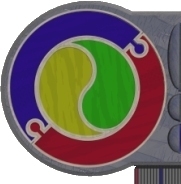Database Languages
eXercise #10
The Election Database
The Questions that
follow relate to a database that contains partial records for election
results. The Database is as follows:
You must assume
that all the votes have been counted for the 1990 election.
Table: Candidates
| Year |
Candidate |
Electorate |
Party |
NumVotes |
| KEY |
KEY |
ma |
ma |
op |
| 1987 |
Bill |
Sommerset |
Independant |
12455 |
| 1990 |
Frank |
Gold Coast |
ALP |
33841 |
| 1990 |
John |
Gold Coast |
Lib |
28459 |
| 1990 |
Sam |
Gold Coast |
Nat |
15050 |
| : |
: |
: |
: |
: |
Table: Electorates
| Year |
Electorate |
NumVoters |
MemberSitting |
InformalVotes |
| KEY |
KEY |
ma |
op |
op |
| 1987 |
Gold Coast |
107408 |
Frank |
2335 |
| 1990 |
Gold Coast |
113250 |
|
3071 |
| 1990 |
Sommerset |
111643 |
Terry |
1905 |
| : |
: |
: |
: |
: |
|
|
|
|
|
Table: States
| Electorate |
State |
| KEY |
ma |
| Fischer |
QLD |
| Gold Coast |
QLD |
| North Sydney |
NSW |
| Bendigo |
VIC |
| : |
: |
Important:All electorates
in the Candidates or Electorates tables must appear in this States table.
Firstly, CREATE THIS DATABASE IN ACCESS, ENSURE YOU DO THE RELATIONSHIPS CORRECTLY then - insert the data you see here.
The following questions
are challenging, and exercise a wide range of query skills
- List the sitting
members who contested their electorates in the 1990 election, together
with the name of their electorate (use a join).
- List candidates
who have contested more than one election (use a group by having).
- List candidates
who have contested the same electorate more than once (use
a group by having).
- List the electorate(s)
with the highest informal count in the 1987 election (use a subquery).
- List the electorate(s)
with the highest percentage of informal votes in the 1987 election
(use a sub-query).
- Suppose vote
counting is progressing on the evening of the 1990 election. List,
for each electorate, the percentage of the vote counted in that electorate
(use a join and a group by).
- List Electorates
contested in 1990 but not by independents.
- List Electorates
contested by both the ALP and the Liberal Party but neither the Democrats
nor the National Party in 1990.
- List any candidate
who belonged to a party in 1987 but who sought election as an independent
(in any electorate) in 1990.
- List Electorates
contested by two or more independents in 1990.
- For each state,
list the total population on the roll in 1990.
- For each state,
list the number of electorates contested by each party in 1990. (Exclude
independents from the result.)
- For each state,
list the number of electorates in 1987 and the number in 1990.
- For each electorate,
list the party which received the greatest primary vote in 1990. Hint:
create and then use a temporary table:
Temp (electorate, max votes).


